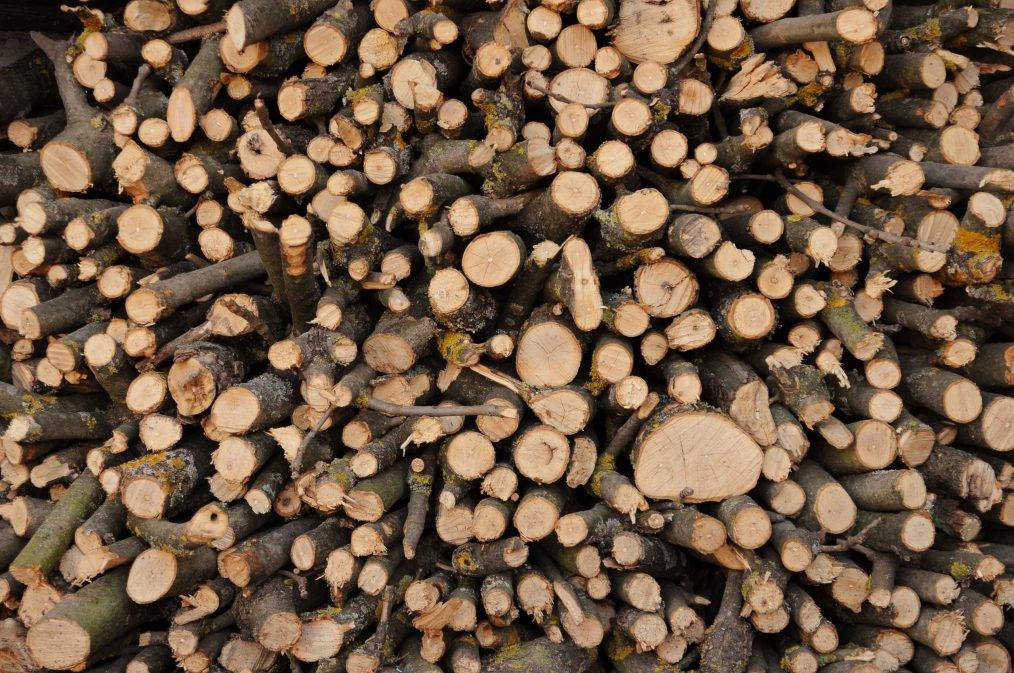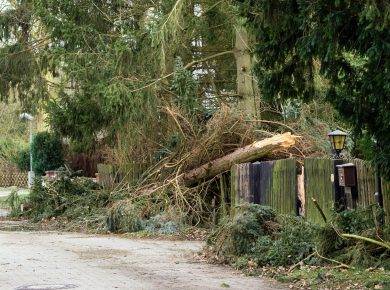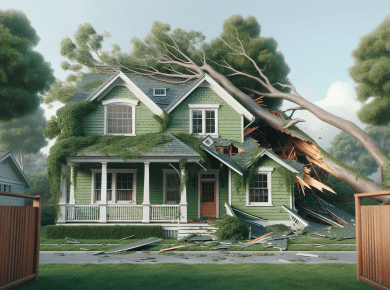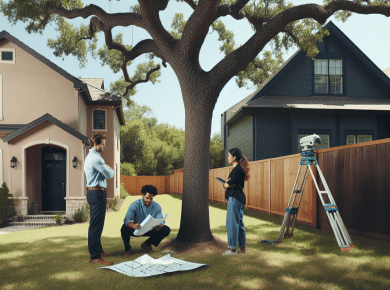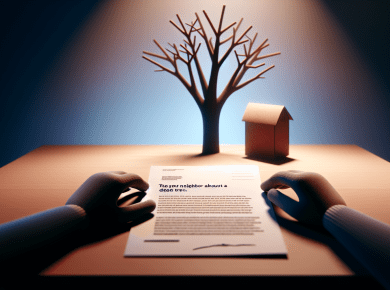Understanding Property Encroachments
Property encroachments can lead to disputes between neighbors, especially when trees and their roots extend improperly across property lines. Understanding how to identify these encroachments and their effects is crucial for any property owner.
Identifying Property Boundary Disputes
Boundary disputes arise when different property owners claim ownership of the same land or disagree about how adjoining land is utilized, including cases where a tree’s roots and branches intrude into a neighbor’s yard. Recognizing such a dispute is the first step in resolving it. This process typically involves understanding where the property line is located, reviewing property documentation, or possibly hiring a surveyor if necessary (Daniels, Long & Pinsel, LLC).
| Steps to Identify Boundary Disputes | Description |
|---|---|
| Review Property Deeds | Check the legal description of the property to understand boundaries. |
| Survey the Property | Hire a professional to accurately identify property lines. |
| Inspect for Overlapping Features | Look for trees or structures that may straddle the boundary line. |
For more information on notifying a neighbor of encroachment, refer to our guide on how to notify neighbor of encroachment.
Effects of Property Encroachments
Property encroachments can lead to various negative consequences for property owners, from reduced enjoyment of their property to potential legal battles. Common effects include:
- Decreased Property Value: An encroachment may lower the marketability and value of one’s property due to perceived or actual legal risks.
- Legal Liability: If a neighbor’s tree causes damage, such as falling branches, the property owner could be held liable for damages or injuries.
- Emotional and Social Strain: Encroachments can result in deteriorating relationships between neighbors, leading to stress and conflict within the community.
Understanding the potential implications of property encroachments can help neighbors act proactively. For example, if a neighbor cut down a tree that straddled the property line, it may not only impact the landscape but also contribute to tensions between the parties involved. More insight on this topic can be found in our article about neighbor cut my tree.
Navigating these issues often involves seeking a resolution that maintains peace and respects the rights of all parties involved, such as drafting a sample encroachment letter to neighbor.
Resolving Property Disputes Amicably
Addressing property disputes, especially those related to trees, requires a careful approach that emphasizes communication and documentation. Both strategies can help maintain relationships and lead to satisfactory resolutions.
Communication with Neighbors
Open and respectful communication is vital when dealing with issues related to property encroachments or tree damage. The initial step involves discussing the matter directly with the neighbor. It is advisable to approach the neighbor at a suitable time and in a calm manner to express concerns regarding the encroachment or any tree-related damage.
Here are some tips for effective communication:
| Tips for Communication | Description |
|---|---|
| Be Polite and Direct | Clearly explain the issue without resorting to accusations. |
| Listen Actively | Give the neighbor a chance to share their perspective. Understanding their point of view may help in finding a compromise. |
| Document Conversations | Keep notes of discussions regarding the issue, as these may be useful later if the situation escalates. |
If informal communication does not yield results, written correspondence may be necessary. A sample encroachment letter to neighbor can provide a template for articulating concerns professionally.
Importance of Documentation
Documentation plays a critical role in resolving property disputes. Keeping thorough records can help illustrate the nature of the encroachment or damage, which may support one’s position in discussions or legal proceedings.
Key documentation strategies include:
| Type of Documentation | Importance |
|---|---|
| Property Surveys | Obtaining an updated survey can clarify boundaries and verify any encroachments. |
| Photographic Evidence | Taking pictures of the encroachment or damage can provide visual proof that supports the claim. |
| Communication Records | Keeping copies of letters, texts, or emails exchanged with the neighbor can serve as evidence of attempts to resolve the matter. |
| Legal Documents | Any relevant legal notifications or documents can add weight to one’s case if mediation or legal action becomes necessary. |
For comprehensive assistance, homeowners may consider consulting legal advice to ensure that they have all necessary documentation prepared and can address their rights effectively in cases where tree-related disputes escalate. If further action is required, it is crucial to understand the legal implications of the situation.
Engaging in open communication and maintaining accurate records are essential strategies for managing and resolving disputes related to neighborly property encroachments and tree damages effectively.
Legal Steps in Property Disputes
When faced with property disputes, particularly concerning tree damage and encroachments, taking the right legal steps is crucial. This section outlines how to effectively address these issues through a cease and desist letter and seeking legal advice.
Cease and Desist Letter
A cease and desist letter serves as a formal request that instructs the offending party to stop their actions that infringe on one’s property rights, such as cutting down trees. This document is often the first step in resolving property line disputes. Homeowners can customize a template for this letter to clearly outline the issue and assert their rights.
Key components to include in a cease and desist letter are:
- Identification of Parties: Clearly state who the letter is addressed to and who is sending it.
- Description of the Issue: Provide specific details about the encroachment or damage, including dates and actions taken.
- Legal Basis: Reference any applicable laws or regulations pertaining to property rights.
- Request for Action: Clearly state what you want the neighbor to do, such as stopping further cutting of trees or restoring your property.
- Timeframe for Response: Provide a reasonable deadline for them to respond.
- Consequences of Inaction: Mention potential legal actions if the neighbor fails to comply.
A well-structured encroachment letter to neighbor can significantly impact the outcome. For further guidance, consider utilizing a sample encroachment letter.
Seeking Legal Advice
Consulting with a lawyer is an essential step in navigating more complex property disputes. Legal professionals can provide valuable insights into property laws and the specific rights of homeowners regarding tree damage and encroachments.
Key reasons to seek legal advice include:
- Understanding Legal Rights: A lawyer can clarify the specifics of local regulations, including the intricacies of who is responsible for cutting overhanging tree branches.
- Drafting Legal Documents: Legal counsel can assist in drafting more formal documents, ensuring that they comply with applicable laws.
- Evaluating Options for Action: A lawyer can help determine whether to send a cease and desist letter, pursue mediation, or take the matter to court.
- Documentation of Evidence: Legal experts can guide homeowners on how to maintain detailed documentation of the dispute, which is crucial for any potential lawsuit. Keeping records since the start of the issue may strengthen your case (Daniels, Long & Pinsel, LLC).
By addressing property disputes professionally, homeowners can effectively assert their rights and potentially resolve conflicts amicably. For further information on your rights when facing property encroachments, consider the article on can you sue someone for cutting down trees on your property.
Taking Formal Legal Action
When informal discussions and negotiations regarding property disputes fail, individuals may need to consider formal legal actions. This section discusses the process of filing lawsuits and highlights the importance of detailed documentation.
Filing Lawsuits
Filing a lawsuit may become necessary when a neighbor has encroached on your property or damaged your trees, such as by cutting them down. This formal legal action is typically considered a last resort after all other attempts to resolve the issue amicably have been exhausted. It is essential to understand that the legal system is in place to protect individual property rights and to provide recourse in the event of violations.
The process of filing a lawsuit involves several steps, including:
- Consultation with a Lawyer: Seek legal advice to understand the merits of your case.
- Preparation of Documents: Gather all necessary paperwork and documentation to support your claim.
- Filing the Complaint: Submit the lawsuit to the appropriate court, detailing your case and the compensation or remedy sought.
- Serving the Defendant: Officially notify the neighbor of the lawsuit.
- Court Proceedings: Attend hearings and potentially a trial, where both parties will present their cases.
Each state has its own laws and procedures governing property disputes. Consult with a lawyer who specializes in property law to ensure you are following the correct process and are informed about can you sue someone for cutting down trees on your property.
Importance of Detailed Documentation
Maintaining comprehensive documentation is crucial in property disputes, particularly when moving toward a lawsuit. Detailed records can significantly strengthen a case and provide essential proof in legal proceedings. Here’s what to include in your documentation:
| Documentation Type | Description |
|---|---|
| Photographic Evidence | Take pictures of the encroachment or damage before any corrective action is taken. |
| Written Communication | Keep copies of all correspondence with the neighbor, including letters, emails, and notices. |
| Witness Statements | Document accounts from neighbors or friends who can attest to the encroachment. |
| Property Surveys | Obtain a recent survey of your property boundaries to clarify the legal lines (LawDepot). |
| Previous Agreements | Any past agreements related to property boundaries or tree maintenance should be preserved. |
Proper documentation not only lays the groundwork for your case but can also aid in negotiations before the lawsuit reaches court. It is advisable to keep records organized and accessible, as they might be needed for various steps in the legal process. For more information and resources, you might want to explore our resource on writing a sample encroachment letter to neighbor.
Time Constraints in Property Disputes
Understanding the time constraints involved in property disputes is essential for property owners facing issues like encroachment. Time limitations are often governed by statutes of limitations, which can vary by jurisdiction, and can significantly impact the options available for resolution.
Statutes of Limitations
Statutes of limitations set the maximum period one can wait before initiating legal proceedings. In California, for instance, if an individual is encroached upon, they have 5 years to take legal action. On the contrary, if they are the encroaching party, they have 5 years to potentially establish property rights through continuous use and payment of taxes on the encroached land (JustAnswer).
| Type of Claim | Time Period |
|---|---|
| Action by Encroached Party | 5 years |
| Action by Encroaching Party | 5 years |
This timeframe is crucial for property owners. Delaying action beyond this period can result in the loss of legal rights and options to reclaim or protect their property.
Risks of Delaying Responses
Delaying responses to an encroachment case can have detrimental effects. It may allow the encroaching party to strengthen their claim, potentially leading to ownership rights through adverse possession. This strategy can be formalized in cases where the encroacher continues to occupy the land without dispute from the property owner. Consequently, a lack of action might ultimately hinder the affected party’s rights to their property (JustAnswer).
Neighbors are encouraged to address disputes proactively. Effective communication, promptly issuing a sample encroachment letter to neighbor, and documenting all interactions and agreements can help in resolving disputes amicably and within the legal time frames required.
Taking timely action not only protects property rights but also aids in maintaining neighborly relationships by facilitating open dialogue and resolution. Consider consulting with a legal professional for assistance based on the specifics of the situation.
Mediation and Settlement
Navigating property disputes can be complex, especially when dealing with issues related to trees and property boundaries. Mediation and settlement approaches can provide an effective way to resolve these conflicts without escalating them into lengthy legal battles.
Role of Real Estate Lawyers
Engaging a real estate lawyer during the mediation process can offer significant advantages. These specialists provide crucial support in understanding property laws and can help negotiate settlements that are fair to both parties. According to Daniels, Long & Pinsel, LLC, seeking advice from a legal expert is vital to avoid missteps that might jeopardize a neighbor’s case. Lawyers can assist in gathering the necessary evidence and documentation that support an individual’s stance in a dispute.
Having legal representation not only simplifies communication during negotiations but also increases the likelihood of a satisfactory resolution. A real estate lawyer can facilitate the drafting of agreements outlining mutual understandings, protecting the rights of both parties involved. Mediation allows for an informal discussion with the objective of reaching a compromise, which can ultimately be more beneficial than going to court.
Drafting Agreements for Property Division
Once an agreement is reached during mediation, a proper legal document should be drafted to formalize the terms. This may include agreements about tree maintenance, property lines, or even compensation for any damages incurred. Drafting clear and concise agreements can prevent future misunderstandings and disputes.
In some cases, if mediation fails to resolve the issue, the previously negotiated terms may serve as a foundation for a formal legal recourse, such as court intervention. As stated by Daniels, Long & Pinsel, LLC, formal agreements can lead to equitable property division or establish boundary lines legally if negotiations do not yield results.
| Agreement Type | Description |
|---|---|
| License Agreement | Allows one neighbor to use a portion of the other’s property, such as for tree maintenance. |
| Boundary Agreement | Clearly defines the boundary line between properties, reducing the likelihood of future disputes. |
| Compensation Agreement | Establishes terms for compensation due for damages incurred by one property’s actions affecting another. |
It’s essential to document all agreements thoroughly to ensure that both parties uphold their responsibilities and to maintain legal validity. Neighbors facing tree-related property issues may benefit from checking out additional resources, including a letter to neighbor about tree for formal communication and tree trimming request letter to neighbor for maintenance discussions related to shared trees.



